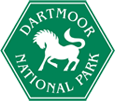Types of Planning Application
Householder Application
For alterations or extensions to an existing residential home (e.g. loft conversions, extensions, porches, garages).
Full Planning Application
A detailed application for new buildings, changes of use, or major alterations. Must include full plans of the proposal.
Outline Planning Application
Used to find out if the principle of a development is acceptable before submitting full details. If approved, a further “Reserved Matters” application is needed to agree details such as design, access, and landscaping.
Reserved Matters Application
Submitted after an outline application has been approved, to provide detailed plans for the development.
Change of Use Application
Required if you want to change how a building or piece of land is used (e.g. from a shop to a café, or from agricultural land to residential use).
Listed Building Consent
Needed for any alterations, extensions, or demolition work that affect the character of a listed building. This may be required in addition to planning permission.
Advertisement Consent
Needed for certain signs and advertisements (e.g. shopfront signs, illuminated boards).
Approval (Discharge) of conditions
Needed when your planning permission or listed building consent includes conditions that must be signed off before work starts. For example, you may be asked to provide details of roof materials or landscaping.
Lawful Development Certificate (Proposed)
Confirms that proposed works or use are lawful and do not need planning permission. Often used for peace of mind or when selling a property.
Lawful Development Certificate (Existing)
Confirms that an existing use or building work, carried out without planning permission, is now lawful (usually due to the passage of time).
Prior Approval Application
Covers certain permitted development rights where the council must first approve specific details (e.g. larger home extensions, agricultural buildings, telecom masts).
Non-material Amendment
For very small changes to an approved scheme that do not materially affect the permission (e.g. moving a window slightly).
Variation/Removal of Conditions (Section 73 Application)
For making minor material changes to an approved application by changing or removing conditions.
